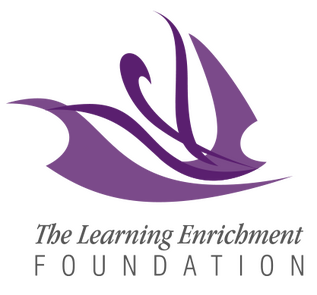
Thriving Senior Teams Build Thriving Companies
I help CEOs transform scattered leadership teams into unified forces equipped with modern tools to lead the company they're becoming, not the one they were.
The Double Challenge of Senior Team Effectiveness
You, like many of today’s CEOs face a critical reality: your senior team isn’t just misaligned—they’re also operating with yesterday’s playbook in today’s game.
| Current Reality | Potential Future |
|---|---|
| Strategic Misalignment: Leaders with different priorities pulling the company in conflicting directions | Unified Direction: A senior team moving in lockstep toward clear, shared priorities |
| Outdated Leadership Models: Approaches that worked when your company was smaller now create bottlenecks | Modern Leadership Practices: Approaches calibrated to your teams’ needs as well as your company’s current size and market position |
| Role Confusion: Executives unclear about how their roles must evolve as the company grows | Role Clarity: Each leader confident in their evolving contribution to company success |
| Tactical Overwhelm: Senior leaders stuck in day-to-day operations instead of strategic direction | Strategic Focus: Executives working on the business, not just in it |
| Command-and-Control Mindset: Micromanagement that stifles innovation and slows execution | Empowerment Culture: Teams throughout the organization equipped to execute without constant senior oversight |
| Legacy Processes: Meeting cadences and decision processes that don’t match today’s pace of business | Adaptive Systems: Governance and communication cadences that scale with your growth |
The Path to a High-Performing Leadership Team
Identify: Assess the current state of company health across five critical dimensions
Map: Map company symptoms to their root causes in the five key areas of team health
Implement: Implement targeted improvements in both team alignment and leadership capabilities
Experience

With 15+ years guiding senior leadership teams through transformation, I specialize in both aligning scattered teams and modernizing their leadership approaches for today’s business challenges.I’ve worked with CEOs across industries who faced the same challenge: talented executives using yesterday’s leadership playbook to run today’s company. Through my comprehensive assessment process and targeted interventions, I help senior teams both unify their direction and update their leadership toolkit.
“We have worked with Mike since we started the company over 15 years ago. Along the way, he provided the insight and guidance to us on the senior team so that we could take the company further than any of us thought possible. Of course, we put in all the sweat, sleepless nights, and investments. But without Mike, we would not have gotten here.” — Shameiz Hemani, CEO of Greenlight Consulting




Book Your Leadership Team Assessment
Schedule your 60-minute Senior Team Assessment and discover how to align your executives with the modern leadership tools they need. Stop leading yesterday’s company – start building tomorrow’s. Select a convenient time here:
Download my Leadership Team Health Check
Is Your Senior Team Ready for Tomorrow’s Challenges?
Not every leadership team needs immediate intervention, but most show warning signs of misalignment or outdated approaches. Download this complimentary workbook to uncover:
The 5 Critical Dimensions of senior team health that determine your company’s future
A Self-Assessment Tool to quickly evaluate where your leadership team stands today
Impacts Inside Your Company of a senior team operating with yesterday’s playbook
Immediate Action Steps you can take to begin strengthening your senior team
This practical guide helps you identify whether your leadership team is aligned in purpose and equipped with modern leadership approaches—or if they’re holding your company back from its full potential.
In addition to the Leadership Health Check, you'll receive 4 short emails over the next few weeks containing leadership team transformation tips, modern leadership tools, and practical insights that you can immediately apply. After that, you'll continue to receive occasional brief, practical emails with the latest tools and insights to transform your team into a unified force and steer your company to its full potential. Unsubscribe anytime.
Why This Workbook Matters
As your company grows and evolves, the leadership approaches that worked yesterday often become limiting factors today. This workbook helps you spot the subtle signs that your senior team needs to transform—before they become major obstacles to your growth.
In Your Corner: Leadership Blog
Read it here on Substack.
© 1999-2025 by Michael Ehling. All rights reserved.
How I Help

About Michael EhlingFor over 35 years, I've been obsessed with one question: Why do talented leadership teams and the companies the run so often fail to reach their potential?The answer became clear through my work with dozens of CEOs and their senior teams: Even the most brilliant individuals can't drive exceptional results when they're operating with misalignment and outdated leadership approaches.My StoryMy journey began when I witnessed in companies--ones I cared deeply about--how the right leadership team could transform an organization, while the wrong dynamics could bring even promising companies to a standstill.I have developed both a proprietary assessment and a suite of modern leadership tools. The assessment examines five critical dimensions of senior team health - revealing precisely where your leadership team may be stuck in yesterday's playbook. The modern leadership tools equip you for tomorrow's challenges.My ApproachI focus exclusively on transforming leadership teams into cohesive forces that people respect, trust, and eagerly follow.My clients are CEOs who know their companies could achieve more - leaders who feel frustrated that their vision isn't being fully realized despite having talented individuals on their team.Through a proven three-step process, I help CEOs:- Assess the current state of your company's health across five critical dimensions- Map these symptoms to their root causes in the five key areas of team effectiveness- Implement targeted improvements in both team alignment and leadership capabilitiesThe TransformationThe result? A cohesive, forward-thinking leadership team that steers confidently with modern approaches, driving growth and innovation throughout your organization.No more misalignment. No more outdated leadership approaches. No more nagging feeling that your company's growth is being limited by how your leadership team operates.Ready to Transform Your Leadership Team?Book Your Leadership Team Assessment to pinpoint exactly what's holding your company back.

Thank You!
Thank you for the time to complete the surveys. That's everything from my end. If you have any questions, please contact me (see the email I sent you) or the recruiter or hiring manager you've been working with.In your corner,Michael--
Michael Ehling
strategic advisor & senior-team coach
balance coaching & consulting

Thank You!
Thank you for the time you spent to complete the surveys. If you have any questions about them, please contact me (see the email I sent you).In your corner,Michael--
Michael Ehling
strategic advisor & senior-team coach
balance coaching & consulting

Thank You!
Thank you for completing your surveys, the first part of your Leadership Loop program.You will find copy of your report and a debriefing workbook in your inbox.Next steps:
Book a 1-1 debrief: select a convenient time here to review your report with me.
Please use the workbook to prepare for our 1-1 meeting.
In your corner,Michael--
Michael Ehling
strategic advisor & senior-team coach
balance coaching & consulting